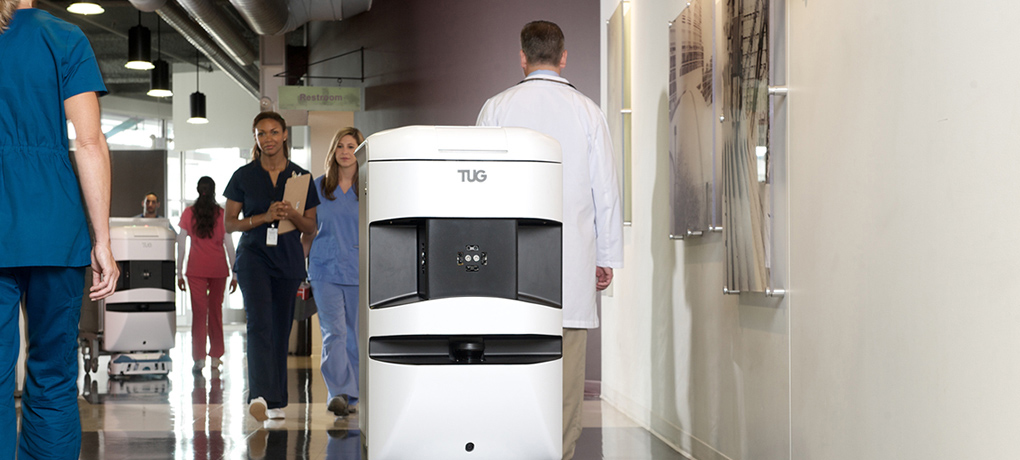Hospital Robot Saves Lives, Does the Laundry

Wired Magazine writer Matt Simon recently visited the brand-new Mission Bay wing at the University of California at San Francisco (UCSF) Medical Center. The purpose was to see how well a fleet of servant robots were operating within this setting. The experience was both interesting and personally unnerving.
 What They Are
What They Are
Mr. Simon’s first encounter with one of the robots left him underwhelmed. The machines, known as Tugs, are plain, white rectangular objects approximately four feet in height and come in two basic configurations. One version, designed for transporting food and linens, has a narrower profile and features a rear chassis on which containers can be placed. The other type is used to deliver medications and carries its own bins. Tugs use laser vision and over two dozen ultrasound and infrared sensors for depth perception and steering clear of obstacles, all while moving at a leisurely pace.
What They Do
Designed to aid human workers rather than supplant them, Tugs bring meals, towels, sheets, and medicines to stations and rooms. They also take dirty linens, waste, and empty trays to where they can be processed. The robots cover approximately 12 miles each day using only their detection devices, Wi-Fi, and internal charts as guides. Tugs are not limited to set paths and can interact with humans and signal their presence with both beeping sounds and human voices of either a calming male or female or, alternatively, a boisterous Australian-accented male.
How People React
Before putting the robots to work, hospital staff were trained in how to deal with them. The basic rule is to view their physical presence like that of an elderly relative. Mr. Simon observed some employees saw them as adorable while others were subtly frightened. Overall, the attitude is positive enough for workers to provide them with affectionate names like “Tuggy McFresh” or “Wall-E” along with various names of fruit.
Matt’s own feelings leaned in a more negative direction since it occurred to him that these machines can only get smarter over time and they are not fixed to a set path. He also mentioned jealousy because they’re not stymied by any sense of embarrassment.
